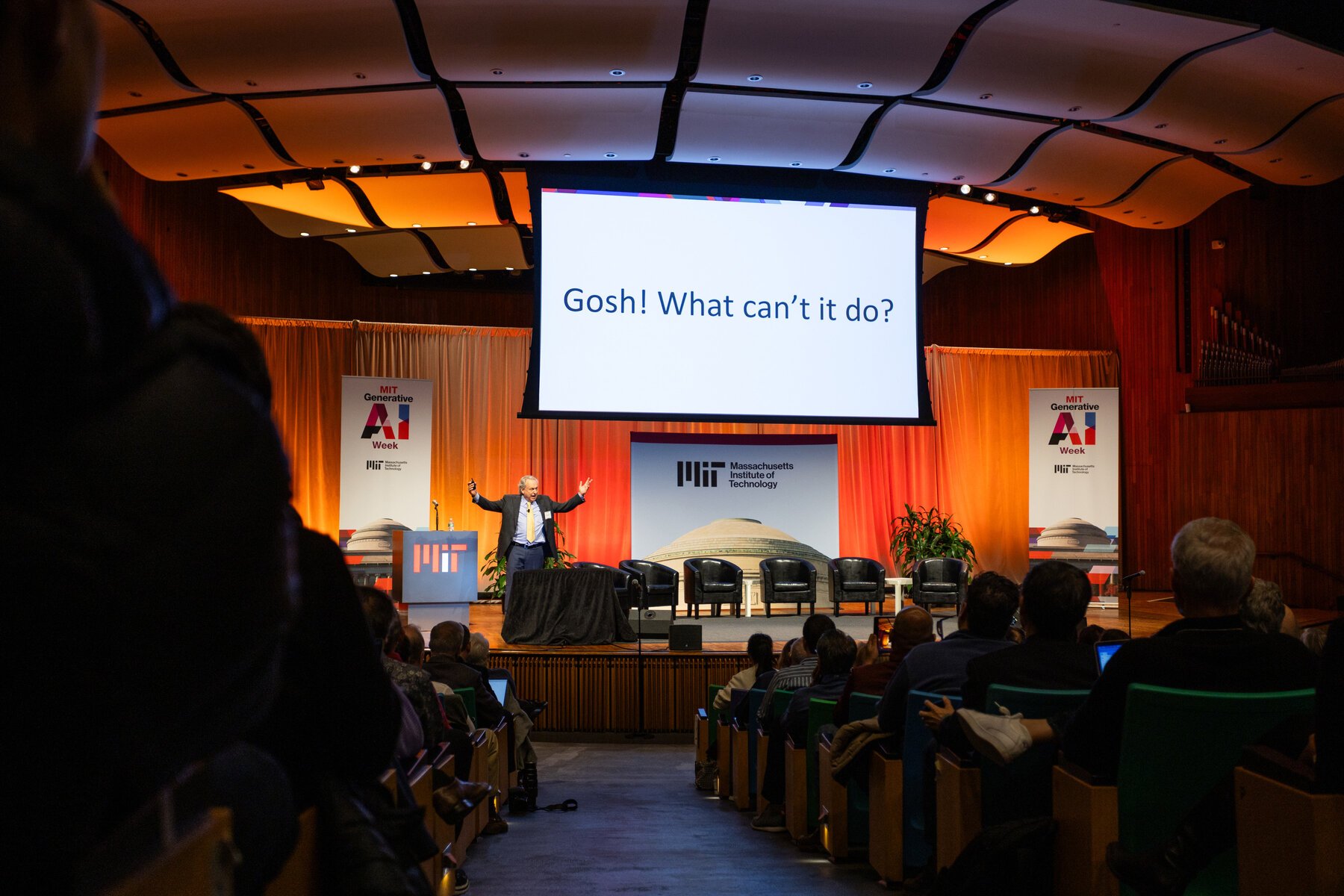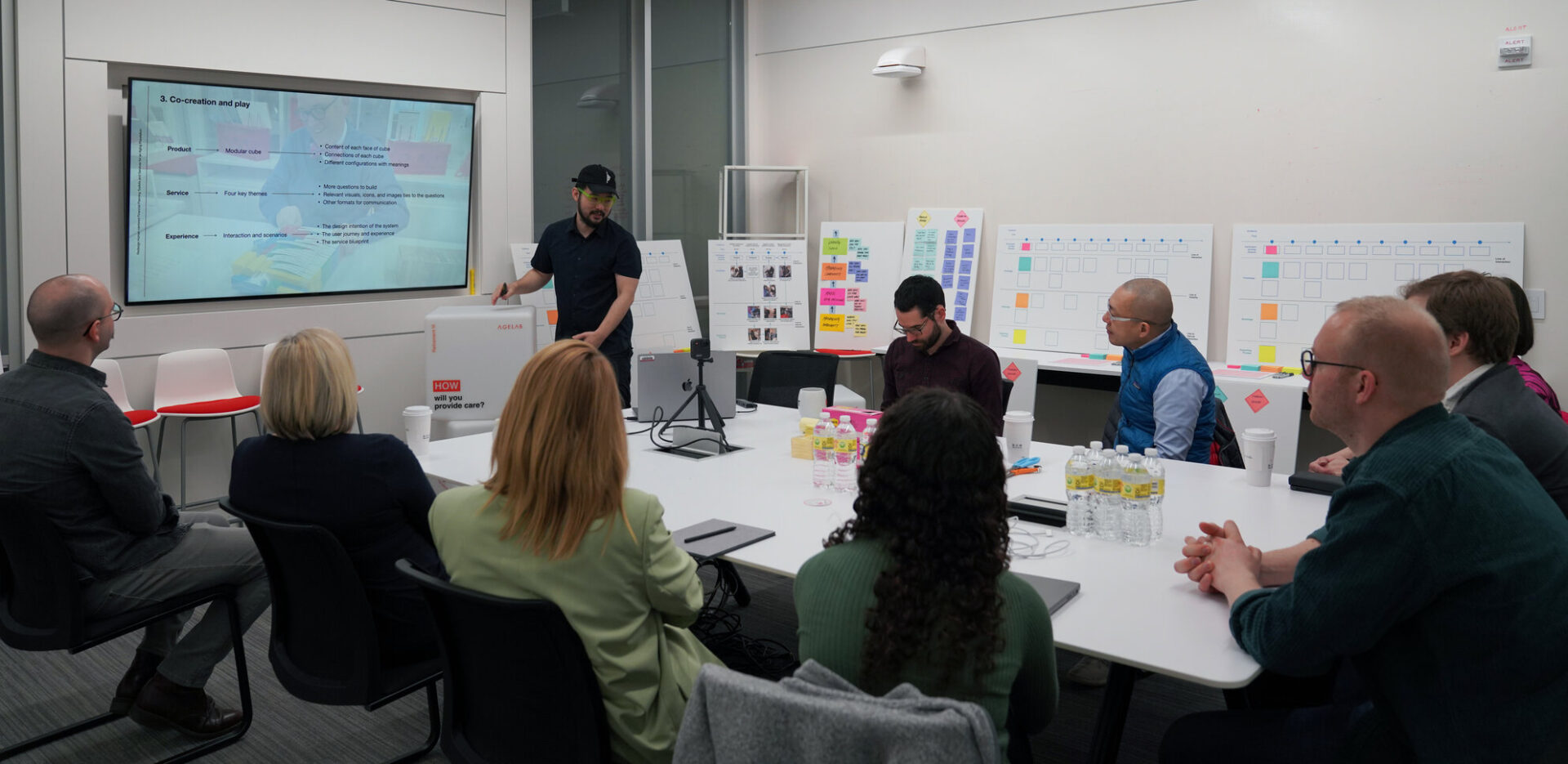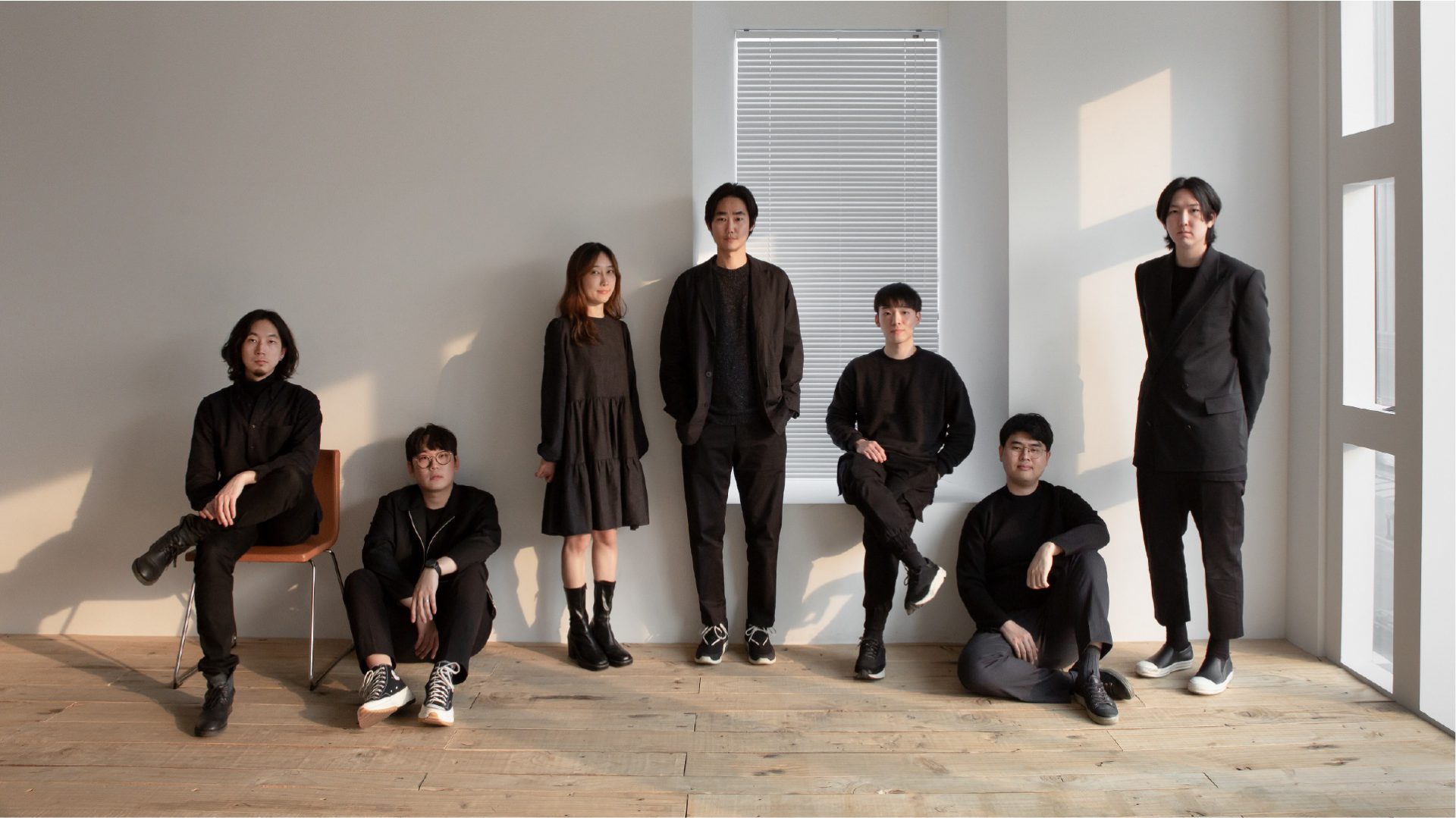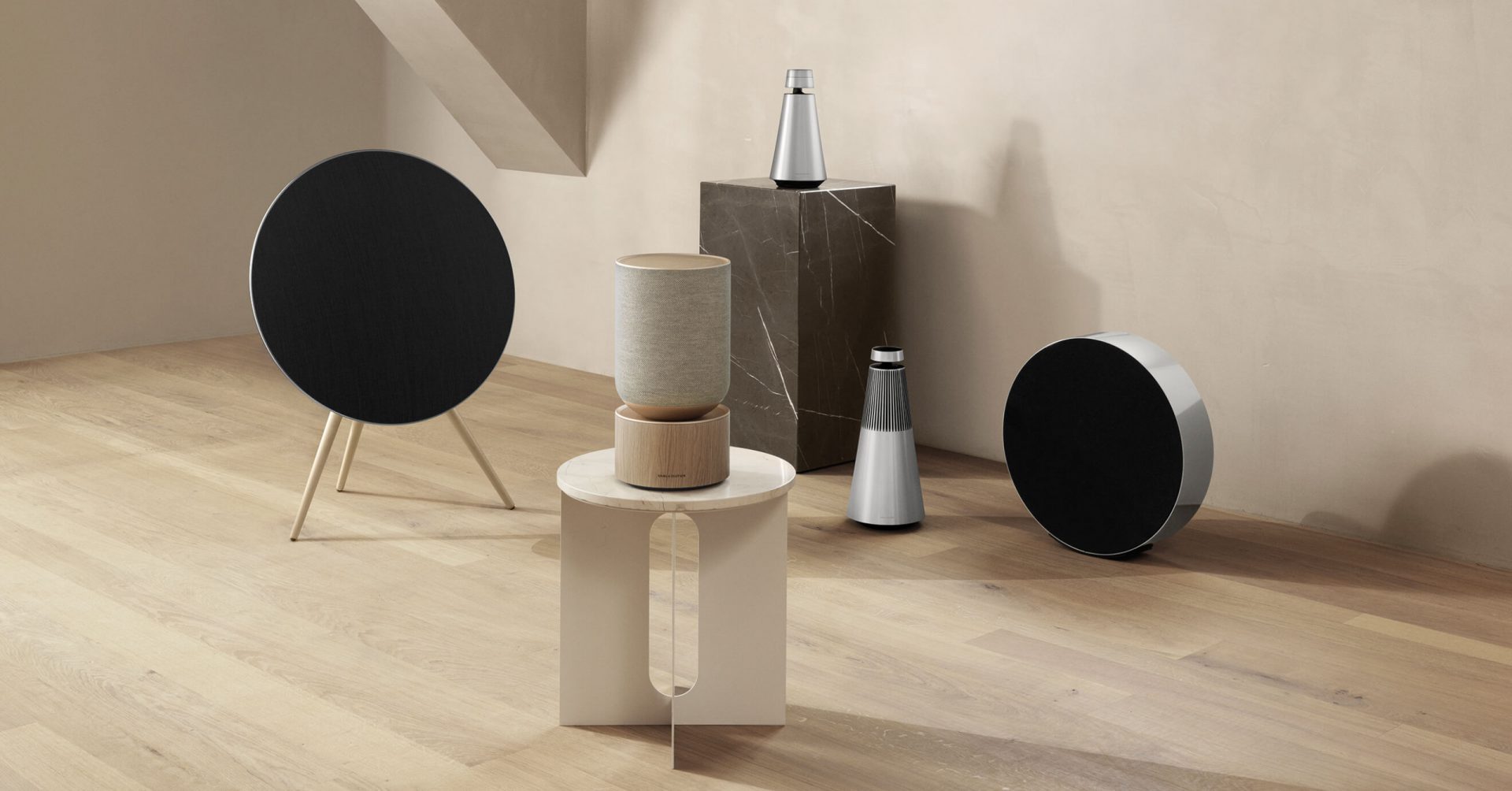From Post-it notes to solutions. From artificial intelligence to anticipating intelligence
Nowadays, many AI-empowered tools and services can be useful resources when designers actually know what they are looking for.

How do we prototype a meaningful, respectful, and impactful service experience?
After conducting an intense three-month pilot test of my longevity coaching service experiment at Massachusetts Institute of Technology (MIT), some of qualitative research skills and prototyping techniques have gradually become my muscle memory: framing the right research questions, gaining critical thinking, making rapid service experience prototypes, and maintaining confidence and a positive attitude.
This iterative creative process and these evidence-driven approaches made me want to leave some space for myself so that I could start to document my initial thoughts and four reflections and learnings about the topic of service experience prototyping and artificial intelligence (AI).
The term AI has become an overused buzzword that you can hear from your colleagues, good friends, the news, and maybe even your partners.
I am interested in how to apply AI-empowered tools to prototype service experiences such as how we rebuild future outer space scenarios generated by the space data gathered by NASA. Liddell, a principal futurist and designer from Teague, published an article in FastCompany to talk about the future of artificial intelligence in airports and how we make the boarding process more human-centered by considering people’s privacy, time, convenience, and experience.
AI services and their applications indeed penetrate our lives and works seamlessly and directly. But does anyone really understand the essence of AI? Or we are just good at using applications or tools empowered by AI to show and tell?
Another way to look at it is that the term AI could also stand for anticipating intelligence.
The idea of using the term “anticipating” is to predict meaningful and possible futures to celebrate human values. It extends the original definition of AI beyond computation and technologies. This not only helps designers, researchers, educators, and scientists, but also users to appreciate the concept and its applications.
Establishing the correct perception of AI is important, since we are living in organic, analog, nature beyond virtual, digital, and artificial environments. In this article, four key preliminary learnings are captured, while exploring the challenge of how to prototype service experience and discussing its relationship with AI.
Service Experience and Artificial Intelligence – 4 learnings:
Service experience is not designed but curated
Most people enjoy gaining and sharing their own unique experiences and getting inspired by others’ stories.
We cannot really “design” other people’s experiences, such as how people feel when they see a table. Experience is different from person to person, because everyone has a different lens to form their own perspectives of the world.
We can curate an experience we think that people might have by creating a set of defined touchpoints, prompts, roles, service scripts, actions, and entry and exit conditions within the service journey.
Before conducting a service experience prototype, we can think of a prototype, running a pre-experiment before prototyping to get early-stage indications to help us refine and estimate the success of the prototype. We ask, should we build it versus can we build it?
Buchenau and Fulton Suri (2000) published the definitions, types, and applications of experience prototyping. Experience prototyping is a type of prototyping that enables participants, including designers, researchers, and other stakeholders to gain first-hand appreciation of existing or future conditions through active engagement with each interactive touch point in the context of tangible or digital prototypes.
There are many ways to do service experience prototypes, such as using traditional prototyping materials—foam core, paper, LEGOs—to realize the early ideas, or leveraging the power of AI to do a variety of scenario simulations.
We can experiment with a service experience prototype by trying generative AI programs, such as Midjourney, DALL·E, and ChatGPT, to envision future scenarios (Figure 1).

Besides using AI-empowered creative tools, researchers, anthropologists, designers, engineers, and scientists can also apply AI-empowered research software, such as ATLAS.ti, a computer-assisted qualitative data analysis software (CAQDAS), integrate AI coding analysis with Open AI to help them more effectively and efficiently synthesize data to translate information into insight (Figure 2).

Another example of a research tool empowered by AI is Litmaps, considering as a personal literature navigator. It transforms the traditional approach in which researchers discover materials by keyword searching. Litmaps leverages citation networks, AI algorithms, and automated systems to ensure that it captures relevant papers (Figure 3).

Regarding workflow and team communication, Fabrie, a creative AI whiteboard, combines with AI computation power to enable more collaborative virtual teamwork and communication to help creative talents from fields such as UX, product, fashion, interior, graphic design, and e-commerce to solve problems.
Understanding how to use these design tools can empower designers to curate and prototype a service experience in a more efficient way, but not necessarily a meaningful way (Figure 4).

Great solutions are not generated by AI but learned through life experiences
Foster, Head of Design at Google X and former partner at Near Future Lab, shared his three principles about his views on speculative design or futuristic design process to illustrate the concept of future mundane (2013):
- The Future Mundane is filled with background talent.
- The Future Mundane is an accretive space.
- The Future Mundane is a partly broken space.
He challenged the stereotypes most people have through watching Hollywood sci-fi movies or novels. Why is there is always a superhero in a sci-fi setting, such as Spiderman, Batman, Godzilla, or Transformers? The real world is full of people like us as background talents to deal with systemic and complicated challenges.
Why, in futuristic environments, is there always a clean space with a huge sleek screen magically filled with sophisticated interface? We might need to ask where is our original stuff?
For example, in the real world, people own things such as plants, family photos, desktop stationery, and other personal belongings in their office or bedroom. The status quo is not always as perfect as we expected, and it is OK to fail and to be not perfect.
Foster’s perspectives inspired me to rethink these AI-generated solutions that apply to environment design, space planning, interface design, graphic design, product innovation, and many other emerging fields.
I am asking myself: what have we learned from these AI-generated solutions?
We already live in the world of AI and emerging technologies. Everyone needs to learn how to embrace AI and live with it. Leveraging AI properly allows us to extend our creative capabilities and problem-solving skills.
For example, the automatic-generated design solutions are probably close to perfect solutions, providing many possibilities while considering comprehensive aspects such as colors, material, finishing (CMF), strategies, business models, user experience, ergonomics, and many more factors.
I enjoy the new design landscape and potential brought by AI, but I also believe that human-centered solutions shouldn’t only rely on AI-based processes.
Considering AI’s abilities to frame the questions and identify the subtle needs, there is still much room to play and prepare. To achieve meaningful, respectful, and impactful solutions across products, services, and experiences, we still need to get the nutrition from our real-life experiences, constant failures, and deep reflections (Figure 5).

Apply AI in the context of design process
In 2023, MIT hosted a three-day event—an MIT Generative AI week—to reflect on the generative AI tools by setting up the right goals, exploring the creative potential, measuring the risks, harnessing the power, and understanding the social responsibilities and ethics. It covered four important aspects:
- Generative AI + Shaping the Future Symposium
- Generative AI + Education Symposium
- Generative AI + Creativity Symposium
- Generative AI + Impact on Commerce Symposium
The objective was to enable academics and industry leaders, researchers, scientists, engineers, designers, and students to have thoughtful and critical dialogues in the midst of AI transformation.
Nowadays, many AI-empowered tools and services can be useful resources when designers actually know what they are looking for. These AI-empowered software or services are an accessible platform with easy-to-use instruction, but not necessarily effective or appropriate for different design challenges.
For example, asking the right questions and framing the challenges right can help us identify the research or design aim clearly. This is a critical step that most people overlook and quickly dive into solution mode.
I am an AI immigrant with limited knowledge and still trying to learn how and why to use these tools in the design process (Figure 6).

The starting point of the design process might be very different, once people can master AI-empowered tools or services. For example, designers can use DALL·E to create a series of mood boards for projects as a foundation for inspiration. Some AI apps and services, such as Fabrie, can just responsively provide you with various design solutions, style options, and renderings to help people finish their tasks. Such use might give us more rich and insightful ideas during the creative process to deepen our work.
Imagine if we can view an intervention as an interface between people and design solutions. The process is to serve as an integral bridge to connect people’s desirability, economic viability, and technology feasibility with a design solution.
I believe that the process is the destination. If we know how and when to use AI in what design stages, it will benefit the design outcome by ensuring that it not only meets the needs of users but also exceeds their expectations.
Prototype service experiences not only for people but also with people
When designers want to prototype new experiences to test or validate the research hypothesis or design solutions to requests from clients, we can’t just create the experience out of a vacuum or simply wait for others.
Service design or experience design is a complicated multidisciplinary domain knowledge that covers products, services, interaction, space, human behavior, systems, and other relevant expertise. It can tie many stakeholders in a single experience design project.
The nature of the complication creates a need for co-creation or participatory design to invite key stakeholders such as clients, investors, and target users to be part of conversations. The intention is to ensure their voices are heard and create a sense of ownership.
Manzini (2015) introduced a concept of design for social impact with real-world case studies in his book—Design, When Everybody Designs—to emphasize the importance of community design and design engagement.
He proposed a participant involvement (PI) map (page 107) with collaborative involvement on the x-axis and active involvement on the y-axis to divide 2X2 into four quadrants: do-it-yourself, co-production, being served, and co-management. It guides us to consider what types of involvement are suitable for different types of experience design projects.
Working with people also means that an experience design project or a design project, in general, is teamwork by nature (Figure 7), because from the level of product design to service and experience, there is a correlation with the level of complication and systems.

Reflections and conclusion
In addition to the following four learnings, we need to consider the topic of service experience prototypes more broadly and systematically.
- Service experience is not designed but curated
- Great solutions are not generated by AI but learned through life experiences
- Applying AI in the context of a design process is a design strategy
- Prototype service experiences not for people but with people
For example, among all these many useful and powerful prototyping services and AI tools, we could easily get lost in these software, apps, or interfaces, if we don’t understand the intention of learning these platforms or why we need to apply these tools to our design challenges.
With the help of these AI-empowered tools, many design solutions are generated instantly. It has disrupted industries and academics. The value of designers has been challenged since all the creative tools are easy to learn and can generate tons of solutions. But without rich life and work experience, how do we know which are the good solutions? A great taste? A respectful interpretation?
I am also concerned about how to keep up with our design education curriculum with the impact of AI. Are design professors, faculty, and professionals ready to relearn, change, and adapt a new way of teaching or guiding students in AI? What are the upgraded learning objectives, process, outcomes, and evaluation?
In this context of service- and experience-driven economics dominated by AI, the emphasis on exploring, understanding, identifying, and setting design intentions has become more critical than ever.
How do we frame the design challenges? How do we find the unmet user needs, and how do we remain open-minded to integrate new tools, frameworks, and technologies to innovate the field of service experience design?
Forming a suitable frame of reference takes time, commitment, patience, and process to internalize the knowledge to transform into meaningful solutions for people and with people. Otherwise, we will probably merely gather many high-resolution simulations.
Norman, author of Design for a Better World: Meaningful, Sustainable, Humanity Centered, says that designers’ social responsibilities and roles have been increased and changed, since humankind is now facing many unreversible and complex systemic socioeconomic and technological challenges.
Using AI to prototype service experiences is less about artificial intelligence, computation, accuracy, and efficiency. It is more about anticipating intelligence, respect, diversity, inclusiveness, and ethics that people care about other people resonating with Porcini’s core idea (2022)—the human side of innovation.
References






